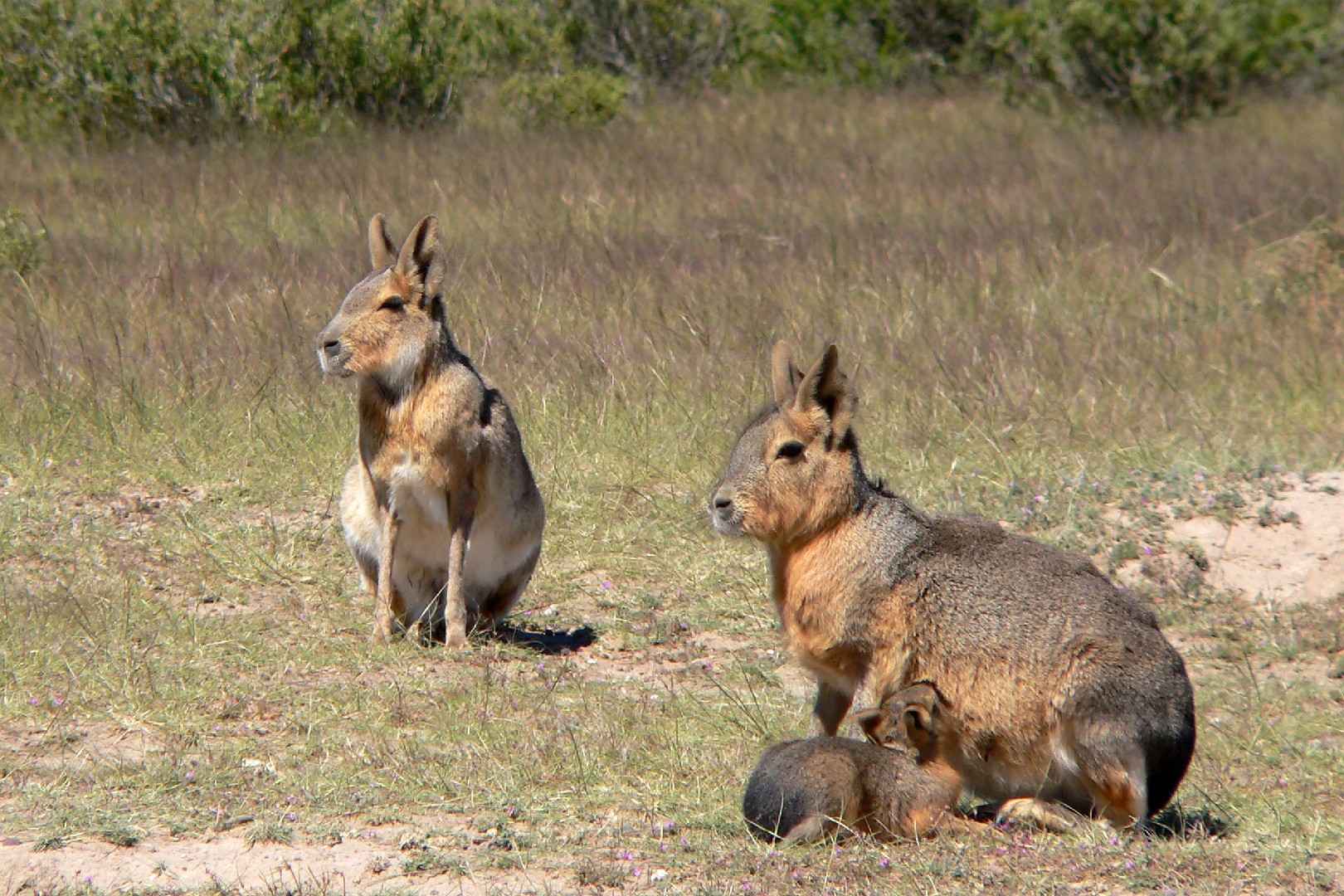Patagonian mara
A species of Maras, Also known as Patagonian hare Scientific name : Dolichotis patagonum Genus : Maras
Patagonian mara, A species of Maras
Also known as:
Patagonian hare
Scientific name: Dolichotis patagonum
Genus: Maras
Content
Description General Info
 Photo By https://www.flickr.com/people/7147684@N03/ , used under CC-BY-SA-2.0 /Cropped and compressed from original
Photo By https://www.flickr.com/people/7147684@N03/ , used under CC-BY-SA-2.0 /Cropped and compressed from original Description
The Patagonian mara resembles a jackrabbit. It has distinctive long ears and long limbs. Its hind limbs are longer and more muscular than its forelimbs and it has a longer radius than humerus. The feet are compressed, making them hoof-like. The forefeet have 4 digits while the hind feet have 3 digits. Its tail is short, depressed and is hairless. It has a gray dorsal pelage with a white patch on the rump separated from the dorsal fur by a black area. In addition, the mara has a white underside with a somewhat orange flank and chin. The mara has a head and body length of 69–75 centimetres (27–30 in) with a tail of 4–5 centimetres (1.6–2.0 in). It weighs 8–16 kilograms (18–35 lb). Unlike most other cavids, the anal glands of the mara are between the anus and the base of the tail rather than being anterior to the anus. 
General Info
Lifespan
10-14 years
Diet
Patagonian mara primarily subsists on a herbivorous diet rich in grasses and herbs. They have a marked preference for green shoots and use their strong incisors to gnaw on bark and hard seeds.
Appearance
Patagonian mara is a medium-sized, rodent-like animal with a slender, elongated body and short fur. Its coat is predominantly brown with a grey underbelly. Distinctively, it has long hind legs, similar to a kangaroo, which are used for leaping. This creature's head is small and pointed, featuring large, rounded ears. Notably, both males and females share similar physical characteristics without significant differences.
Behavior
Patagonian mara exhibits crepuscular activity patterns, primarily foraging during dawn and dusk. Marked by its complex social structure, it forms permanent monogamous pair bonds and practices alloparental care. Predominantly herbivorous, patagonian mara's diet helps to disperse plant seeds in its habitat, thus playing a crucial ecological role. Territorial markings are done through scent-rubbing on vegetation within their domain.
Population
Decreasing

 Photo By https://www.flickr.com/people/7147684@N03/ , used under CC-BY-SA-2.0 /Cropped and compressed from original
Photo By https://www.flickr.com/people/7147684@N03/ , used under CC-BY-SA-2.0 /Cropped and compressed from original Scientific Classification
Phylum
Chordates Class
Mammals Order
Gnawing mammals Family
Cavies Genus
Maras Species
Patagonian mara